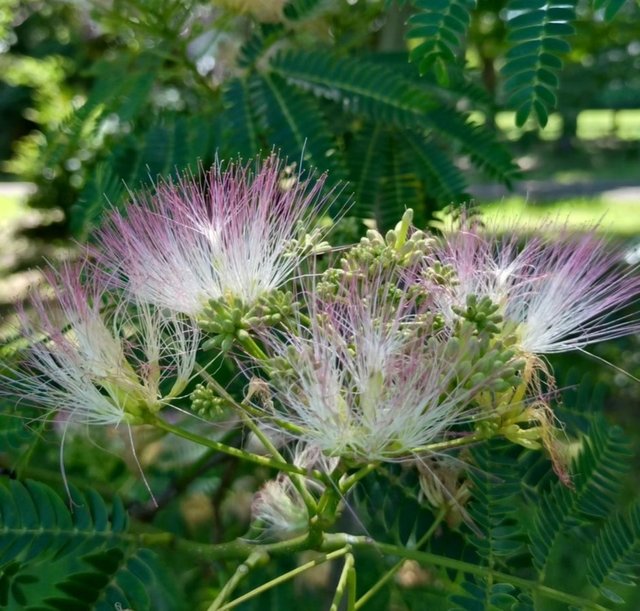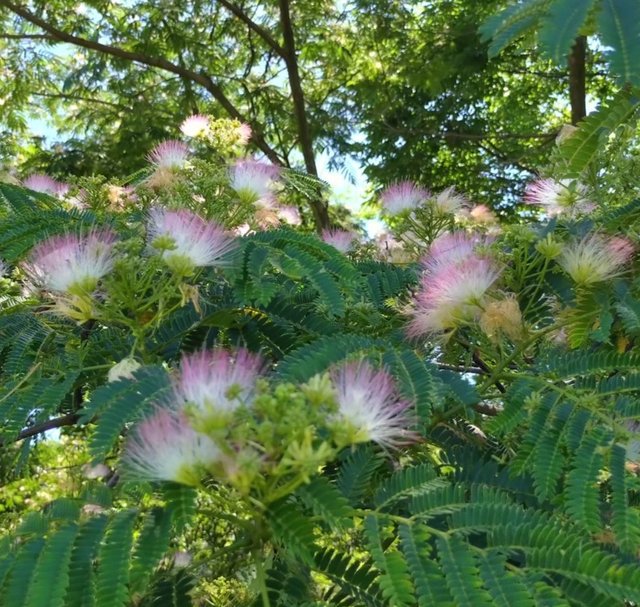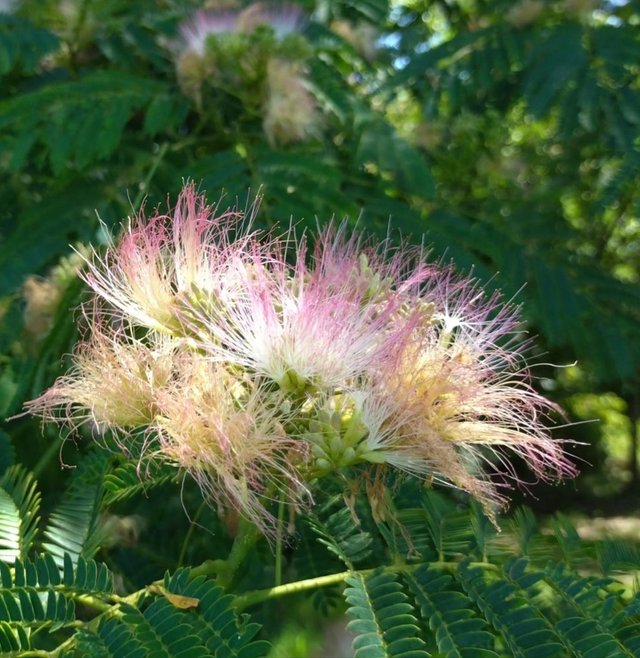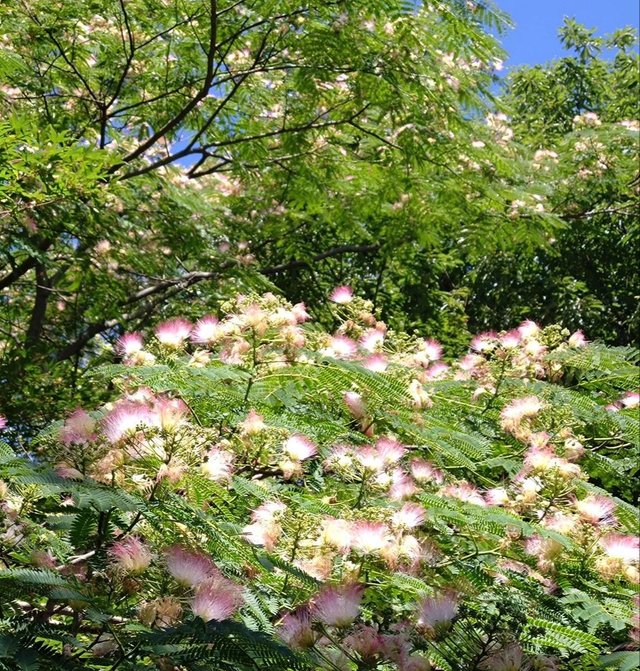Beautiful Colour Persian Silk Tree Flower
The Persian silk tree, also known as the Albizia julibrissin or mimosa tree, is a captivating and unique species celebrated for its vibrant, silky flowers and delicate, fern-like foliage. Native to Asia, particularly Iran (Persia), this tree has been widely cultivated and admired in gardens and landscapes around the world.
Botanical Characteristics
Appearance
The Persian silk tree is a small to medium-sized deciduous tree that typically grows to a height of 20 to 40 feet with a similar spread. Its broad, umbrella-shaped canopy provides dappled shade, making it a popular choice for ornamental planting. The bark is light brown to gray and smooth, often becoming slightly fissured with age.
Leaves
The leaves of the Persian silk tree are one of its most distinctive features. They are bipinnately compound, meaning each leaf is composed of many small leaflets arranged on a central stem. These leaflets close at night or during periods of rain, giving the tree a dynamic, responsive quality. The foliage is bright green and feathery, contributing to the tree’s graceful appearance.
Flowers
The flowers are the true showstoppers of the Persian silk tree. They bloom in summer, typically from late June to early August, and are clustered in fluffy, pom-pom-like heads. Each flower is a mass of long, silky stamens that can range in color from pale pink to deep magenta. The flowers are not only visually stunning but also attract a variety of pollinators, including bees, butterflies, and hummingbirds.
Growth and Cultivation
Climate and Soil
The Persian silk tree is hardy in USDA zones 6 through 9, preferring warm climates with full sun exposure. It can tolerate a variety of soil types, including clay, loam, and sandy soils, as long as they are well-drained. The tree is drought-tolerant once established, making it a suitable choice for areas with hot, dry summers.
Planting and Care
Planting should be done in spring or fall to allow the tree to establish its root system. When planting, it is important to dig a hole twice as wide and just as deep as the root ball. The tree should be watered regularly during its first year, and mulching around the base can help retain moisture and regulate soil temperature.
Pruning is generally not necessary for the Persian silk tree, except to remove any dead or damaged branches. However, it can be pruned to shape or control its size if desired. Fertilization is typically not required, as the tree can thrive in poor soils, but a balanced, slow-release fertilizer can be applied in early spring if growth is sluggish.




Thanks For Reading
Device Information
| Device | cannon eos 600D |
|---|---|
| Lens | 55-250 zoom leans |
| Location | Myanmar |
